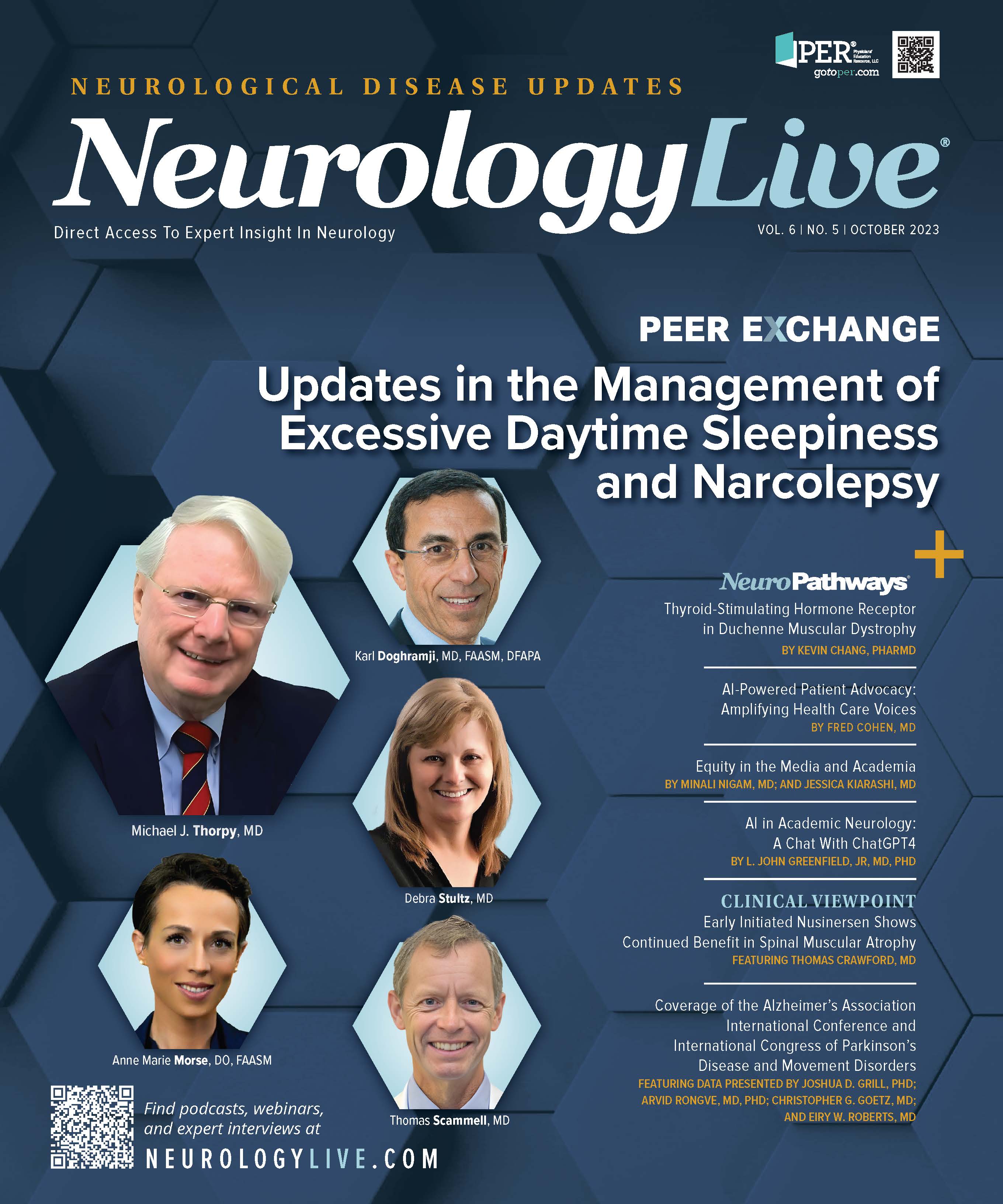Phase 3 KINECT-4 Findings Show Valbenazine Decreases Tardive Dyskinesia Severity
On average, clinician-rated TD severity, measured by AIMS, and patient-reported assessment of the physical, social and emotional impact of TD, measured by TDIS, decreased with one-capsule, once-daily valbenazine over 48 weeks.
Eiry W. Roberts, MD

Recently, an analysis of the phase 3 KINECT-4 trial (NCT02405091) showed a comparable pattern of improvement in clinician-rated tardive dyskinesia (TD) severity and awareness/distress and patient-reported TD impact over 48 weeks with valbenazine (Ingrezza, Neurocrine Biosciences).1 Assessed through the Abnormal Involuntary Movement Scale (AIMS) and the Trajectories of Tardive Dyskinesia Impact Scale (TDIS), scale scores decreased with treatment and thus, the use of both of them may give a more complementary understanding of the patient’s experience with TD.2
Over a 48-week treatment period, the mean AIMS total score decreased by -10.2 (SD, 1.2) for the 40 mg cohort and -11.0 (SD, 0.5) for the 80 mg cohort in comparison with scores of 14.6 at baseline. Notably, the mean TDIS scores decreased from 16.5 at baseline to 6.0 at week 48, indicating TD had a moderate impact on activity by the end of the valbenazine treatment period.
"The use of AIMS and TDIS provides a more complete perspective on the patient's TD experience," Eiry W. Roberts, MD, chief medical officer at Neurocrine Biosciences said in a statement.2 "While AIMS is helpful to assess TD severity as perceived by the healthcare provider and to follow the severity of TD over time, TDIS enables us to assess the physical, social and emotional impact of these involuntary movements from the patient perspective. The insight gained from these data also supports the efficacy of treatment with valbenazine in reducing both HCP-perceived severity and patient-reported impact of TD."
READ MORE: Machine Learning Algorithm Shows Ability to Distinguish Tic From NonTic Movements
Presented at the 2023 International Congress of Parkinson’s Disease and Movement Disorders (MDS), held August 27-31 in Copenhagen, Denmark, investigators analyzed the use of valbenazinefor the treatment of TD among patients with either schizophrenia or mood disorders enrolled in KINECT-4. In the phase 3, open-label study, once-daily valbenazine was given to 163 participants with moderate to severe TD for 48 weeks,followed by a 4-week washout. In KINECT-4, dosing was initiated at 40 mg/day for all enrolled patients, with escalation to 80 mg/day at week 4 based on effectiveness and tolerability. There was a dose reduction to 40 mg allowed if participants could not tolerate the 80 mg dose but if the new dose was not tolerated the patients were discontinued from the trial.
The authors noted in the analysis of KINECT-4 that TDIS displayed a comparable pattern of improvement to the other notable AIMS total score items, including TD severity as measured by AIMS item 8 (AIMS8), incapacitation as measured by AIMS item 9 (AIMS9) and awareness/distress as measured by AIMS item 10 (AIMS10) over the treatment period. At baseline, (n =167) TD severity was moderate (AIMS8 mean, 3.2) and most patients were aware of TD with moderate distress (AIMS10 mean, 2.7). Notably in the same population, TD severity and distress decreased, with most patients scored with minimal severity (AIMS8, 1) and as aware/no distress at 48 weeks (AIMS10, 1).
In the original trial, participants reported TD improvements during long-term treatment as shown by mean change from baseline to week 48 in AIMS total score (sum of items 1-7, evaluated by site raters) in the valbenazine 40 mg/day (-10.2) or 80 mg/day (-11.0) groups. The findings suggested that the treatment was well tolerated among the patients, and consistent with previous studies. Following week 4, treatment emergent adverse events that occurred in at least 5% of all participants were urinary tract infection (8.5%) and headache (5.2%). In addition, the changes observed from baseline in psychiatric stability, vital signs, electrocardiogram parameters, and laboratory test values generally were small and had no clinical significance.
Click here for more coverage of MDS 2023.
REFERENCES
1. M. Perez-Rodriguez, D. Stull, R. Dhanda, M. Bron, E. Dunayevich, C. Correll. Trajectories of Tardive Dyskinesia Impact Scale (TDIS) and Abnormal Involuntary Movement Scale (AIMS) over time with valbenazine treatment [abstract]. Mov Disord. 2023; 38 (suppl 1). https://www.mdsabstracts.org/abstract/trajectories-of-tardive-dyskinesia-impact-scale-tdis-and-abnormal-involuntary-movement-scale-aims-over-time-with-valbenazine-treatment/. Accessed August 29, 2023.
2. Neurocrine Biosciences Presents Data at MDS International Congress of Parkinson's Disease and Movement Disorders® Demonstrating Comparable Improvement Over Time in Tardive Dyskinesia Severity and Impact Following Treatment With INGREZZA® (valbenazine) Capsules. News Release. Neurocrine Biosciences. Published August 29, 2023. Accessed August 29, 2023. https://www.prnewswire.com/news-releases/neurocrine-biosciences-presents-data-at-mds-international-congress-of-parkinsons-disease-and-movement-disorders-demonstrating-comparable-improvement-over-time-in-tardive-dyskinesia-severity-and-impact-following-treatment
